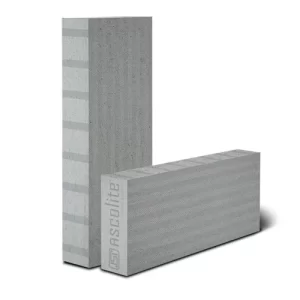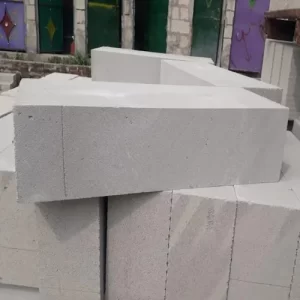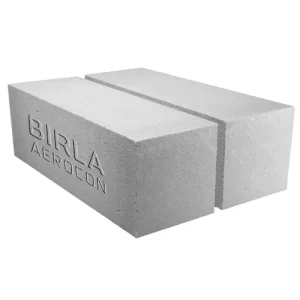Subtotal: $40.29
Bricks & Construction Aggregates
-
Concrete AAC Blocks, Size: 650 X 250 X 100mm
Brand AscoliteColor GreyShape Cubical$57.08/ cu mConcrete AAC Blocks, Size: 650 X 250 X 100mm
$57.08/ cu m -
Lightweight AAC Block, 12 in x 4 in x 2 in
Usage/Application Partition WallsSize 12 in x 4 in x 2 inColor Grey$33.58/ cu mLightweight AAC Block, 12 in x 4 in x 2 in
$33.58/ cu m -
Rectangular Aac Autoclaved Aerated Concrete Block
Shape RectangularMaterial AACThickness 100mm,125mm,150mm,200mm,225mm,250mm,300mm$31.90/ cu mRectangular Aac Autoclaved Aerated Concrete Block
$31.90/ cu m -
AAC Block Rectangular
Brand Birla AeroconColor GreyShape Rectangular$54.84/ cu mAAC Block Rectangular
$54.84/ cu m
Bricks & Construction Aggregates: The Ultimate Guide
Introduction
Bricks and construction aggregates are the backbone of the construction industry, providing the essential materials needed for durable and sustainable building projects. From residential homes to commercial buildings, bridges, and roads, these materials play a crucial role in ensuring strength, longevity, and stability.
Understanding the different types of bricks and aggregates, their benefits, and proper usage can help in making informed construction decisions. This guide will cover:
-
Types of bricks and construction aggregates
-
Their uses and advantages
-
Installation and maintenance tips
-
Frequently Asked Questions (FAQs)
What Are Bricks & Construction Aggregates?
Bricks
Bricks are rectangular blocks made from clay, concrete, or fly ash, used for building walls, pavements, and structures. They are known for their strength, durability, and thermal insulation properties.
Construction Aggregates
Aggregates are granular materials like sand, gravel, crushed stone, and slag, used in construction to enhance the strength and stability of concrete and asphalt. These materials form the foundation of most construction projects.
Types of Bricks
1. Clay Bricks
-
Made from natural clay, fired in a kiln for hardness.
-
Used in residential and commercial buildings.
-
Available in solid, perforated, and hollow varieties.
2. Concrete Bricks
-
Manufactured using cement, sand, and stone chips.
-
Highly durable and fire-resistant.
-
Used in non-load-bearing walls and facades.
3. Fly Ash Bricks
-
Made from fly ash, cement, sand, and lime.
-
Eco-friendly, lightweight, and highly energy-efficient.
-
Used in modern construction projects.
4. Engineering Bricks
-
High-strength bricks with low water absorption.
-
Ideal for damp-proofing and structural applications.
5. Sand Lime Bricks
-
Made from sand, lime, and fly ash.
-
Offers high compressive strength and smooth finish.
-
Commonly used in industrial and commercial buildings.
6. Fire Bricks
-
Heat-resistant bricks used in fireplaces, chimneys, and industrial furnaces.
-
Made from silica and alumina.
7. Hollow Bricks
-
Lightweight and good for insulation.
-
Used for partition walls and energy-efficient buildings.
8. Interlocking Bricks
-
Specially designed to fit together without mortar.
-
Used in quick and cost-effective construction.
Types of Construction Aggregates
1. Sand
-
Fine aggregate used in plastering, masonry, and concrete work.
-
Available in river sand, manufactured sand (M-sand), and pit sand.
2. Gravel
-
Medium-sized aggregates used in concrete mixing and drainage systems.
-
Available in pea gravel, crushed gravel, and river gravel.
3. Crushed Stone
-
Produced by crushing large rocks.
-
Used in road construction, concrete foundations, and railway ballast.
4. Coarse Aggregates
-
Larger stones that provide strength to concrete.
-
Used in high-rise buildings and bridges.
5. Recycled Aggregates
-
Made from crushed concrete, bricks, and asphalt.
-
Eco-friendly and used in sustainable construction projects.
6. Slag Aggregates
-
By-product of steel and iron production.
-
Used in road construction and cement production.
7. Lightweight Aggregates
-
Made from expanded clay, perlite, or vermiculite.
-
Used in insulation and lightweight concrete.
Benefits of Bricks & Construction Aggregates
1. High Strength and Durability
-
Bricks and aggregates provide excellent structural integrity.
-
Resistant to weathering, fire, and pests.
2. Thermal and Sound Insulation
-
Bricks help in maintaining indoor temperatures, reducing energy costs.
-
Aggregates in concrete enhance soundproofing properties.
3. Eco-Friendly and Sustainable
-
Fly ash bricks and recycled aggregates reduce construction waste.
-
Natural materials like clay and sand have a low environmental impact.
4. Cost-Effective
-
Readily available and affordable construction materials.
-
Low maintenance and long lifespan reduce long-term costs.
5. Versatile and Aesthetic Appeal
-
Bricks come in various colors, textures, and finishes.
-
Aggregates improve concrete strength and appearance.
Installation & Maintenance Tips
Bricks Installation
-
Use high-quality mortar for strong bonding.
-
Ensure proper curing to avoid cracks.
-
Waterproof the bricks in damp-prone areas.
Aggregates Installation
-
Use the right aggregate size for different construction applications.
-
Compact and level aggregates properly before pouring concrete.
Maintenance Tips
-
Regularly check for cracks and structural integrity.
-
Seal porous bricks to prevent water damage.
-
Clean aggregates before mixing for improved concrete quality.
Frequently Asked Questions (FAQs)
1. What is the best type of brick for home construction?
Clay bricks and fly ash bricks are ideal for homes due to their strength and insulation properties.
2. How do I choose the right aggregate for concrete?
Use coarse aggregates for structural strength and fine aggregates for smooth finishes.
3. Are fly ash bricks better than clay bricks?
Yes, fly ash bricks are lightweight, eco-friendly, and cost-effective.
4. What is M-sand, and how is it different from river sand?
M-sand is manufactured sand, a substitute for river sand with better consistency and less environmental impact.
5. Can recycled aggregates be used in construction?
Yes, recycled concrete aggregates are used in road bases, drainage, and sustainable buildings.
6. How long do bricks last in construction?
Bricks can last over 100 years with proper maintenance.
7. Which type of brick is best for damp areas?
Engineering bricks and sand-lime bricks have low water absorption and are suitable for damp areas.
8. Can aggregates be used for landscaping?
Yes, gravel and crushed stones are commonly used in gardens, pathways, and drainage systems.
9. What is the compressive strength of bricks?
-
Clay bricks: 7.5 – 15 MPa
-
Fly ash bricks: 10 – 12 MPa
-
Concrete bricks: 3.5 – 7 MPa
10. Are bricks and aggregates fire-resistant?
Yes, bricks are naturally fire-resistant, and concrete aggregates improve fireproofing.
Final Thoughts
Bricks and construction aggregates are essential for building strong, durable, and eco-friendly structures. Choosing the right type of materials ensures better quality, cost savings, and sustainability.
Looking for high-quality bricks and aggregates? Explore the best options for your construction project today! 🚧🏗





